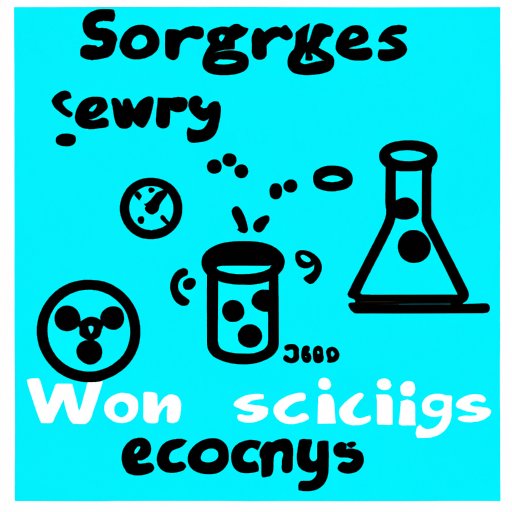Introduction
Science has long been seen as a trusted source of knowledge, with its findings being used to shape our understanding of the world around us. But what happens when science gets it wrong? Can science be wrong? The answer is yes – there are certain situations in which science can, and does, make mistakes.
Examining the Consequences of Scientific Errors
When science is wrong, the consequences can be far-reaching. A single mistake can have a huge impact on society and the environment. In some cases, it can even lead to tragic results, such as deaths or other serious health problems.
One example of this is the tragedy of thalidomide, a drug prescribed to pregnant women during the 1950s and 60s to combat morning sickness. Unfortunately, the drug caused devastating birth defects in thousands of babies, resulting in lifelong disabilities and health complications.
Another example is the case of the Dalkon Shield, an intrauterine device (IUD) that was marketed as a safe and effective form of contraception in the 1970s. However, the device was found to cause infections and infertility in many women, leading to hundreds of lawsuits against the manufacturer.
Exploring the Reasons Why Science is Sometimes Wrong
There are several reasons why science can be wrong. Human error is one of the most common causes of scientific mistakes. Scientists are only human, and they can make mistakes just like anyone else. This could include errors in data collection, analysis, or interpretation.
Lack of resources is also a factor. Many experiments require expensive equipment and materials that not all scientists have access to. This can lead to inaccurate results, since the experiment may not have been conducted properly.
Finally, misinterpretation of data is another potential issue. Scientists must be careful to interpret their data correctly in order to draw meaningful conclusions from their experiments.

Investigating Famous Cases Where Science Got it Wrong
Throughout history, there have been numerous cases where science has gotten it wrong. Here are three of the most famous examples:
Piltdown Man Hoax
In 1912, amateur paleontologist Charles Dawson announced the discovery of a “missing link” between humans and apes in the form of a fossilized skull he named Piltdown Man. Unfortunately, the skull was later revealed to be a hoax, composed of the bones of an orangutan and a modern human.
The Apollo 13 Mission
In 1970, NASA launched the ill-fated Apollo 13 mission to the moon. An explosion in one of the oxygen tanks caused the crew to abort their mission and return to Earth. After an extensive investigation, it was determined that the explosion had been caused by a faulty wiring design.
The MMR Vaccine Controversy
In 1998, British physician Andrew Wakefield published a paper linking the measles, mumps, and rubella (MMR) vaccine to autism. His study was immediately controversial, and subsequent studies have failed to replicate his findings. Wakefield’s paper was eventually retracted and his medical license revoked due to ethical violations.

Analyzing How Scientists Work to Reduce Error and Improve Accuracy
Fortunately, scientists have developed a number of strategies to reduce errors and improve accuracy in their work. Double-checking results is one way to ensure accuracy; scientists will often repeat experiments multiple times to verify their findings.
The peer review process is another important tool. Before a paper is published, it must be reviewed by other scientists to make sure that it is accurate and reliable. This helps to prevent errors from slipping through the cracks.
Finally, technology has also revolutionized the scientific process. With sophisticated software and instruments, scientists can now analyze data more accurately and quickly than ever before.
Looking at Examples of Unreliable Scientific Claims
Not all scientific claims are reliable. Homeopathy, ESP, and creationism are all examples of theories with very little scientific evidence to back them up. These theories have been debunked time and again, yet they still persist in popular culture.

Discussing the Difference Between Scientific Theory and Fact
It’s important to understand the difference between a scientific theory and a fact. A scientific theory is a well-tested explanation for a phenomenon that has been observed in nature. A fact, on the other hand, is an indisputable truth that has been verified through observation or experimentation.
For example, the theory of evolution is a well-tested explanation for how species change over time. This theory has been supported by decades of scientific research. On the other hand, the fact that humans evolved from primates is an indisputable truth that has been verified through the fossil record.

Evaluating the Impact of Misinformation in Science
Misinformation can have a huge impact on the scientific community. It can lead to false conclusions, which can have serious implications for public policy and the health and safety of individuals. To reduce the spread of misinformation, scientists must be vigilant in identifying unreliable sources and double-checking their facts.
Furthermore, it’s important to remember that no scientific theory is ever 100% correct. As new evidence is uncovered, theories must be revised to account for the latest findings. This is why it’s so important for scientists to remain open-minded and constantly question their assumptions.
Conclusion
In conclusion, while science is generally reliable, it can sometimes be wrong. Human error, lack of resources, and misinterpretation of data can all lead to scientific mistakes. Fortunately, scientists have developed a number of strategies to reduce errors and improve accuracy in their work. Misinformation can also have a huge impact on the scientific community, so it’s important to be proactive in identifying unreliable sources and double-checking facts.
(Note: Is this article not meeting your expectations? Do you have knowledge or insights to share? Unlock new opportunities and expand your reach by joining our authors team. Click Registration to join us and share your expertise with our readers.)
